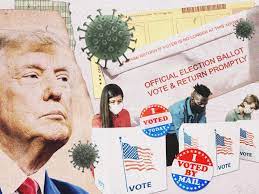What 2020 Did — And Didn’t — Change About How Americans Vote – By Kaleigh Rogers (FiveThirtyEight) / July 31, 2023
In the ongoing experiment that is democracy, every election creates ripple effects for the ones to follow. But occasionally there is an election cycle so disruptive, it changes practically everything. We saw it in 2000, when the contested presidential results in Florida led to a complete overhaul of America’s election infrastructure. The 2020 election was the latest watershed moment. The COVID-19 pandemic and former President Donald Trump’s false claims of a stolen election led to an avalanche of changes in how Americans vote.
The way Americans cast their ballots, who is charged with running elections, what restrictions there are on voting and the very infrastructure used to run elections — all were impacted by this unprecedented cycle. While there’s been a lot of focus, including from yours truly, on changes that negatively impacted the election system and those who work within it — reduced trust in results, threats to election officials, shifting norms of political decorum, new voting restrictions — there were positive changes, too. And some recent changes in the way Americans vote that on the surface appear to have been influenced by 2020 may not have been after all. It’s not that 2020 made voting conclusively better or worse, just different, and as we head into the first post-2020 presidential election, those changes will become all the more apparent.
One of the most striking aspects of the 2020 election was the unprecedented use of mail-in voting. Nearly half (43 percent) of all voters cast a ballot by mail in 2020, a record share, according to the latest Survey of the Performance of American Elections, a post-election poll of tens of thousands of registered voters run by MIT political scientist Charles Stewart III. Much of this was driven by COVID-19 — states changed voting rules and requirements to make it easier to vote by mail, and voters hoping to avoid crowded polling places in the middle of a pandemic took advantage. In the 2022 midterms, use of mail-in voting dropped but was still higher than pre-2020 levels: In the 2018 midterms, 23 percent of voters cast a ballot by mail, while 32 percent did in 2022. But this rise in the popularity of voting by mail actually predates 2020 — an increasingly larger share of voters have cast their ballot this way in every election since 1996. So did 2020’s anomalous expansion of mail-in voting accelerate this trend, or would it have continued on this trajectory regardless?
CONTINUE > https://fivethirtyeight.com/features/2020-election-changes-election-administration-laws/



















